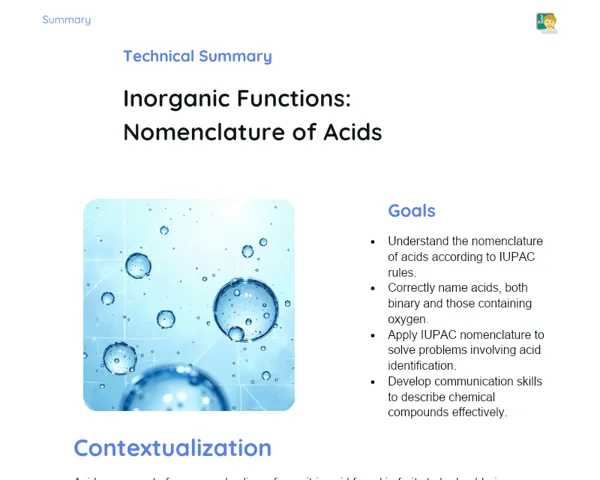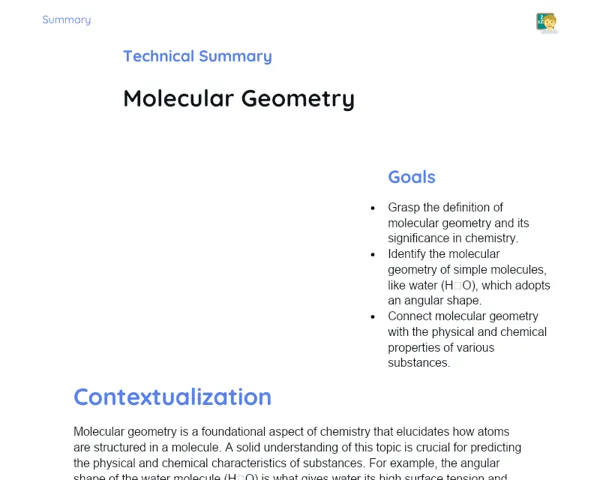Goals
1. Understand the concept of chiral carbon and its significance in optical isomerism.
2. Solve problems related to the identification and counting of spatial isomers.
3. Relate optical isomerism to practical applications in industries like pharmaceuticals.
Contextualization
Optical isomerism is a captivating aspect of chemistry that plays a vital role in various chemical processes. A prime example is its significance in the pharmaceutical sector, where the distinction between isomers can determine whether a drug is effective or harmful. For instance, you might have two compounds with the same chemical formula—one could be a potent medication for managing heart diseases, while the other might be useless or even toxic. This variability arises due to chiral carbons, which lead to optical isomers. Furthermore, in the food industry, the perception of taste and smell can also be influenced by optical isomerism. Such examples underline the necessity of understanding and manipulating optical isomers for a range of scientific and industrial professions.
Subject Relevance
To Remember!
Chiral Carbon
A chiral carbon is a carbon atom that is attached to four different groups or atoms. This asymmetric structure allows for the creation of two isomers that are mirror images of each other, known as enantiomers. The existence of chiral carbons in a compound is what leads to optical isomerism.
-
A chiral carbon must be linked to four distinct groups or atoms.
-
The different spatial arrangement around a chiral carbon results in isomers that are mirror images.
-
Enantiomeric isomers possess identical physical and chemical properties except for their interaction with polarized light and other chiral substances.
Optical Isomerism
Optical isomerism occurs when molecules with identical molecular formulas and structures have different spatial arrangements, leading to variations in how they interact with polarized light. These isomers, known as enantiomers, cannot be superimposed, resembling the relationship between our right and left hands.
-
Enantiomers are optical isomers that are mirror images of one another and cannot be superimposed.
-
The rotation of polarized light by these isomers may happen to the right (dextrorotatory) or to the left (levorotatory).
-
Optical isomerism is essential across several industries, such as pharmaceuticals and food, due to its implications for the efficacy and safety of products.
Enantiomers and Diastereomers
Enantiomers are optical isomers that are mirror images and not superimposable, whereas diastereomers are isomers that do not exhibit this mirror image property. Both are key in organic chemistry and display distinct chemical and physical properties.
-
Enantiomers have the same physical and chemical properties except regarding their interaction with polarized light and other chiral substances.
-
Diastereomers have different physical and chemical characteristics and are not mirror images.
-
Differentiating between these types of isomers is crucial for the synthesis and application of compounds in various industries.
Practical Applications
-
In the pharmaceutical field, the differences between enantiomers can impact the efficacy and safety of medications. For example, thalidomide consists of one therapeutic enantiomer and another that can lead to severe side effects.
-
In the food industry, optical isomerism may influence the taste and aroma of products. For instance, the enantiomers of limonene exhibit different scents, with one being citrusy and the other resembling pine.
-
In biotechnology, the ability to produce specific enantiomers is essential for developing enzymes and other biomolecules that perform particular functions.
Key Terms
-
Chiral Carbon: A carbon atom bonded to four different groups or atoms, critical for optical isomerism.
-
Optical Isomerism: A phenomenon where molecules with the same molecular formula have different spatial arrangements, resulting in varied interactions with polarized light.
-
Enantiomers: Optical isomers that are mirror images of each other and cannot be superimposed.
-
Diastereomers: Isomers that are not mirror images of one another and exhibit different physical and chemical properties.
-
Polarized Light: Light whose waves vibrate in a single plane; it is used to differentiate between enantiomers.
Questions for Reflections
-
How does the presence of chiral carbons in a compound influence its pharmaceutical properties?
-
What are the ethical and economic considerations of producing and promoting substances with differing optical isomers?
-
In what ways does optical isomerism impact our sensory experiences with food and fragrances on a daily basis?
Optical Isomer Identification Challenge
To reinforce your understanding of optical isomerism, you will be tasked with identifying and representing the optical isomers of a selected molecule.
Instructions
-
Select a straightforward molecule containing at least one chiral carbon, such as lactic acid or glucose.
-
Draw the structure of the molecule, pinpointing the chiral carbon and the associated groups.
-
Identify and sketch the potential enantiomers and, where suitable, diastereomers of the chosen molecule.
-
Describe how variations in the spatial structure of the isomers can influence their properties and practical uses.
-
Discuss your findings with a peer to deliberate the implications of different optical isomers in practical scenarios.



